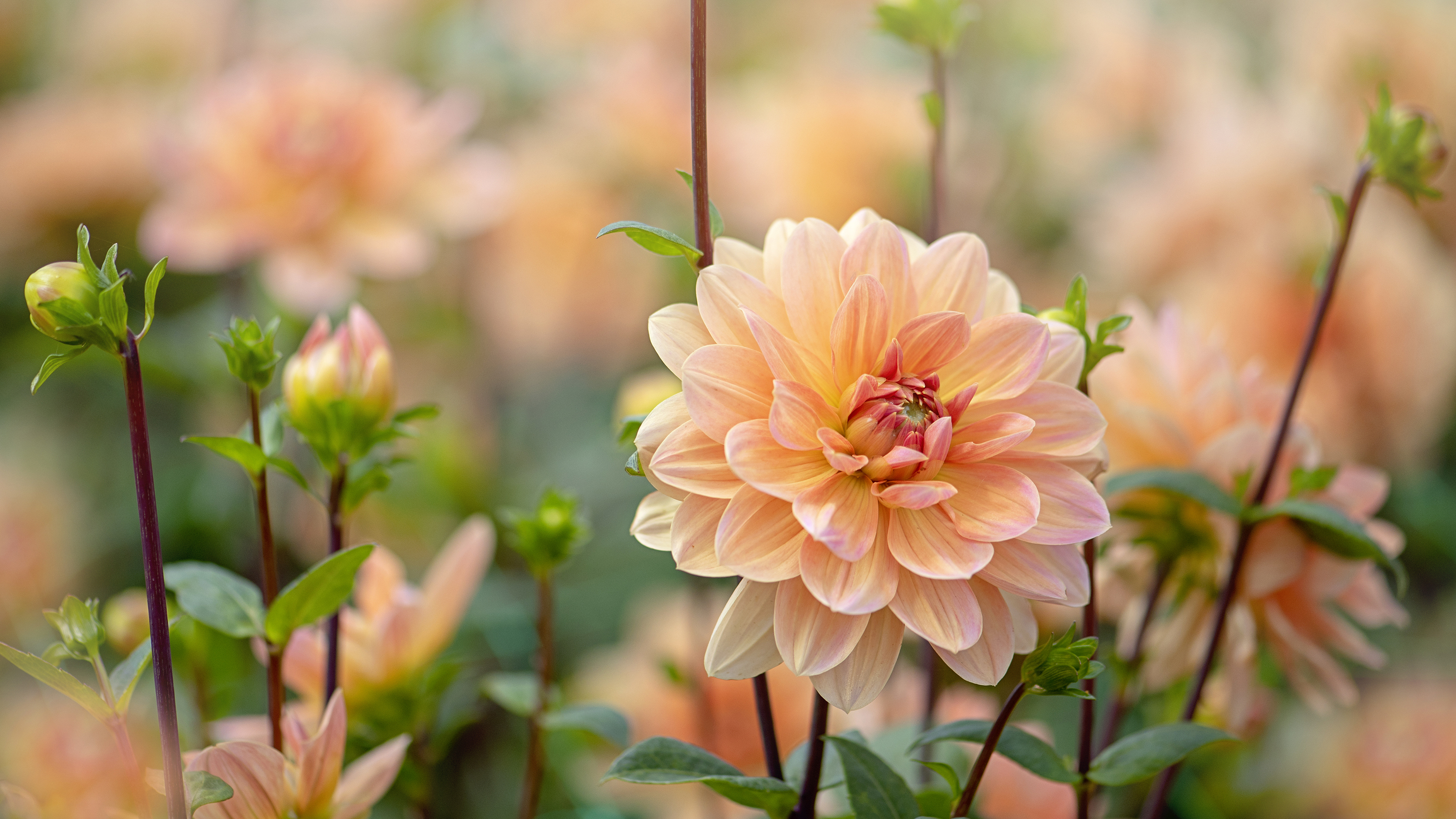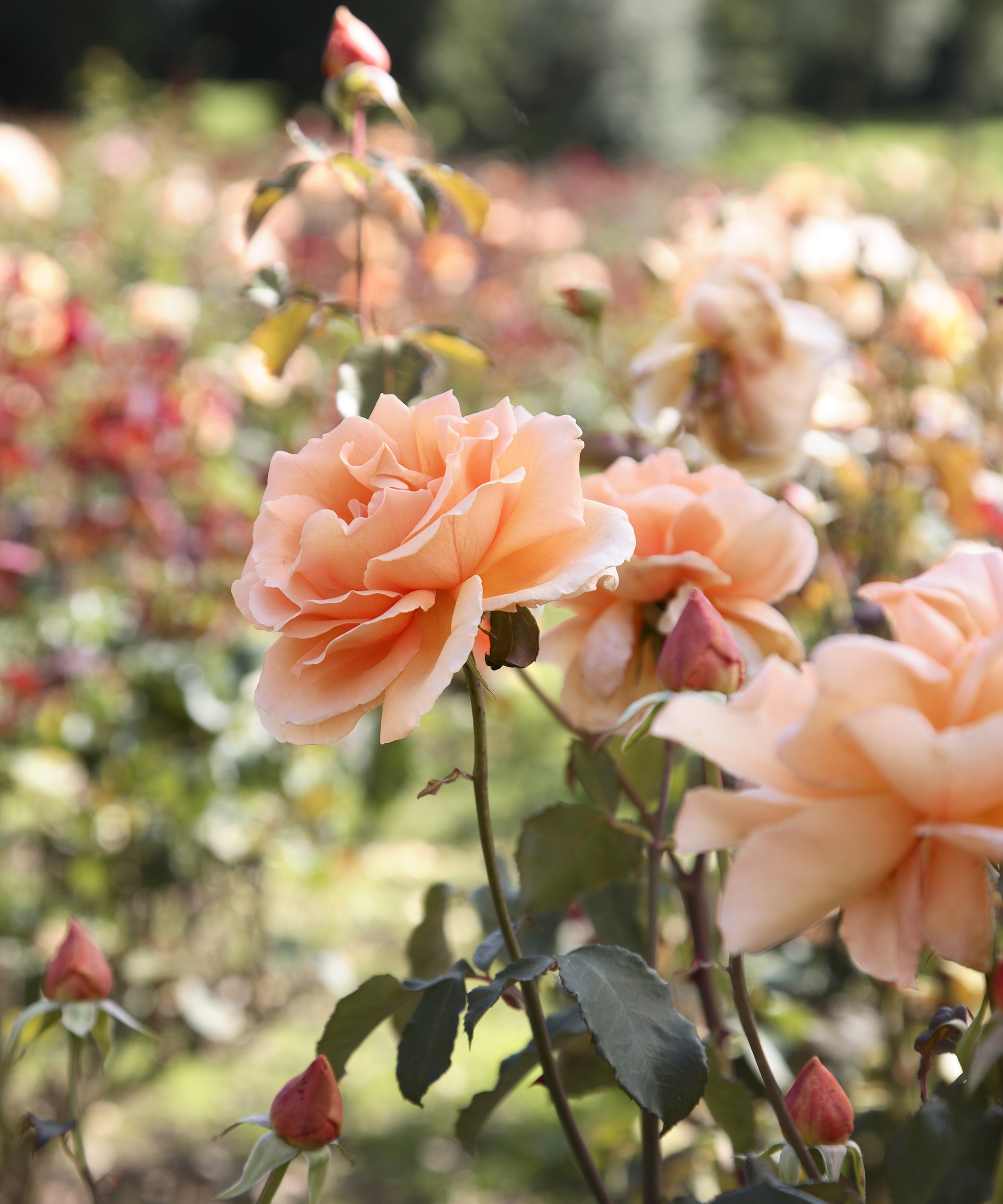Pantone’s Color Of The Year 2024 Is A Gardener’s Dream – Discover 7 Flowers That Are ‘Peach Fuzz’ Perfection
The global authority on color has spoken, and 'Peach Fuzz' is the shade we'll all be seeking out in the coming year. Find out why this gorgeous pinky orange deserves a place in your garden, and be inspired by our top flower picks


Pantone, the world's leading authority on color, has declared 'Peach Fuzz' to be its color of the year for 2024.
The "velvety gentle" shade has been selected for its cozy, nurturing properties, and will help to set the palette in the design world over the coming year.
However, while in fashion and interiors this soft orangey pink could be considered playful and retro, in gardens peach is truly a timeless shade that never gets old. Traditional and trendsetting gardeners alike will find something to love about 'Peach Fuzz'.
When gardening with color, use the color wheel to help choose complementary and contrasting tones. Peach works beautifully with shades of pink, yellow and orange, or even a bold red or blue-purple can have a striking impact.
We've rounded up some of the most stunning flowers inspired by Pantone's 'Peach Fuzz' that will make your garden on trend in 2024.
1. Tulip 'Apricot Beauty'

Exhibiting shades of pale pink through to the most delicate peach, tulip 'Apricot Beauty' blends beautifully with other pastel shades in the garden.
As a triumph tulip, it is an ideal variety for cutting, meaning you can get the 'Peach Fuzz' look in your home as well as your garden.
Sign up for the Gardening Know How newsletter today and receive a free copy of our e-book "How to Grow Delicious Tomatoes".
Tulip Apricot Beauty is long flowering and has strong stems, making the bulbs suitable for planting in more exposed areas.
Growing tulips is easy – plant bulbs between fall and early winter, and enjoy a delightful show come springtime.
2. Rose 'Just Joey'

There are many peach-colored roses to get the Peach Fuzz look – but few are as lovely as 'Just Joey'. Its beauty is so revered that it is a member of the Rose Hall of Fame, having been named the 'World's Favourite Rose' in 1994.
It's a hybrid tea rose cultivar, with a classic shape, and has a strong sweet scent that does not overpower.
'Just Joey' is the perfect addition to any garden – and if you're starting a rose garden, you'll be relieved to know that these hardy shrubs are easy to care for, requiring not much more than an annual prune, feed and mulch.
3. Daylily 'Luxury Lace'

Daylily (Hemerocallis) 'Luxury Lace' is a clump-forming perennial with exotic-looking star-shaped flowers that give off a subtle fragrance.
It will grow in full sun to partial shade, and prefers loamy well-draining soil. As a hardy perennial in USDA zones 4a-8b, this stunning daylily requires little care apart from regular watering and occasional trimming of foliage.
Daylilies can be grown as single specimens, or en masse to cover larger areas.
4. Icelandic poppy ‘Giant Peach’

Icelandic poppy 'Giant Peach' is a real showstopper in the garden, and also makes a gorgeous cut flower, like these beauties from Floret.
With delicate tissue-paper-like petals, the flowers are surprisingly hardy and can survive the coldest of winters. However, they do not do well in high heat.
Start seed indoors in trays in late summer and plant out in the fall. If growing Icelandic poppies as cut flowers, dip the stems in boiling water for up to 10 seconds, and it will help them last up to a week in the vase.
5. Dahlia 'Apricot Desiree'

Dahlias can be found in many soft peach shades with different petal structures, but 'Apricot Desiree' is our choice for getting Pantone's 'Peach Fuzz' into your garden.
A waterlily-type dahlia, 'Apricot Desiree' exudes delicate beauty. It's a versatile long-stemmed variety that can be used in beds, borders, and pots, and makes an excellent cut flower.
Dahlia tubers should be planted in spring, once the last of the frosts have passed. In colder areas, they will need to be dug up and overwintered in a cool, dry spot indoors.
6. Foxglove 'Sutton's Apricot'

Foxglove 'Sutton's Apricot' is such a wonderful cottage garden flower that is beloved by pollinators.
The plants thrive in partial shade and are hardy in gardening zones 4 through 10. They have a large central flower, and if this first spike is removed early, you will get more smaller blooms and the plant will last longer.
Foxgloves are prolific self-seeders, and will keep coming back year after year. The little seedlings are easy to spot, and can be easily moved to where you want them to grow.
7. Geum 'Mai Thai'

With its ruffled, semi double flowers in a lovely peachy pink, geum 'Mai Tai' is the ultimate choice for adding Pantone's 'Peach Fuzz' to your garden. The flowers have a long bloom time, from spring to summer, and are ideal for a cutting garden.
Though the petals may look delicate, geum 'Mai Tai' is actually a hardy perennial and thrives in hardiness zones 5-9.
A clump-forming plant, it can be used in beds, borders, and containers, and can be grown in full sun or partial shade.

Melanie is an experienced gardener and has worked in homes and gardens media for over 20 years. She previously served as Editor on Period Living magazine, and worked for Homes & Gardens, Gardening Etc, Real Homes, and Homebuilding & Renovating. Melanie has spent the last few years transforming her own garden, which is constantly evolving as a work in progress. She is also a passionate organic home grower, having experimented with almost every type of vegetable at some point. In her home, Melanie tends to an extensive houseplant collection and is particularly fond of orchids.